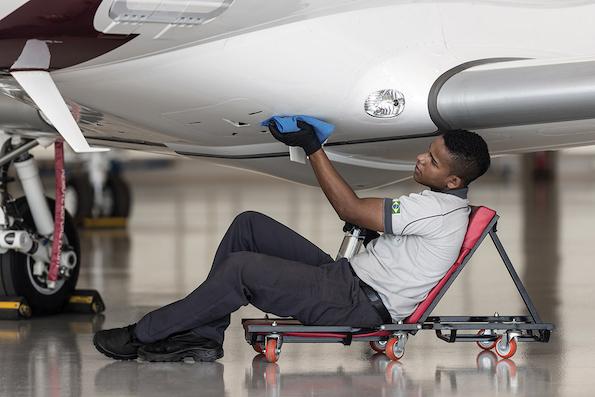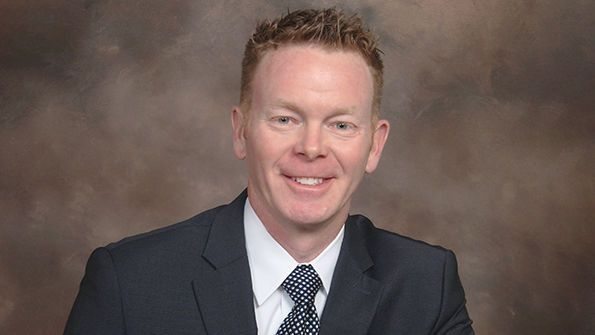
Frank Stevens, Embraer’s vice president for global MRO centers, spoke with Lee Ann Shay on the sidelines of MRO Latin America about the company’s global expansion.
Embraer doubled its footprint in Sorocaba, Brazil, in 2022. Any other MRO facility changes? We’re really just getting our feet wet with regard to global expansion. We’re working on a couple of projects that will allow us to expand commercial operations and executive [business aviation] operations.
We know our customers in North America really like our facility in Nashville, [Tennessee], Embraer Aircraft Maintenance Services. We are looking at expanding there because we’re at nine lines, and we’re sold out through 2024. We also have our facility in Macon, Georgia, close to Atlanta. We can probably put one or two more airplanes in there, and then we’re full through 2024. The industry is booming back so quickly, and companies are flying airplanes so much that they are coming in for maintenance a lot faster than they were before.
We’re looking at expansion in a lot of areas, and I think 2023 is going to be a growth year for Embraer.

Can you elaborate on the expansion? We’ve got a lot of backing from the company’s leadership to expand the MRO operation, and we’re going to take advantage of that. Labor, however, is a whole separate issue because you could build a 100,000-ft.2 facility, but you need 200 people. Where do you find 200 people? They don’t just materialize. Nashville, specifically for commercial aviation, is a great opportunity for us because there are a lot of exterior locations from which we can pull people in. Cost of living is an issue, but we’re adjusting our salaries to compensate appropriately.
Where are you thinking about adding another facility? Everything is on the table right now. We know the highest percentage of our aircraft are in North America, and we get a 70% market share for heavy maintenance there. But we also understand there’s got to be a limit for what we can do right there. In addition, our airplanes are fairly new, compared to Airbus and Boeing; they are just getting to 10 years. A few are just beyond that and are going to secondary markets, so now we have to look at secondary markets and ask: Do we follow the Boeing mentality, where you just license to work on the aircraft, or do we add another authorized service center or an owned service center? So now we’re looking at where our airplanes are going and what’s the proper mix [of services] in the geographic area. For instance, some of our airplanes are starting to go into Africa. Where do we put ourselves, and what type of facility should it be? Meaning, do we go in by ourselves, build a joint venture or pursue a merger or acquisition?
When will you make a decision? There’s going to be some things that we can process through in the middle of the year. We’ve got the whole company supporting us and saying MRO is what we want to invest in. We’re also looking at agnostic capabilities.
Agnostic capabilities? This is something where Embraer is looking to break the mold. Everybody thinks an OEM only maintains that OEM’s aircraft. We say: No, we’re looking at agnostic capability. So if you have a [Boeing] 737 and you have an Embraer and you want us to do both, how can we do that for you? How do we expand our operation to do that? First, we have to take care of capacity. Our Embraer customers need capacity. After that, it’s about how we branch out. In my business, my competitors are not Boeing and Airbus; it’s the other MROs such as Aeroman or Coopesa. I need to compete with them, and they can do a lot more because they’re not OEM-centric.
